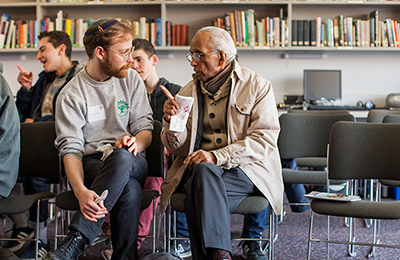Devarim – Shabbat Chazon

Devarim is always the sedra read on the Shabbat before the 9th of Av. It is also one of the few Shabbatot that bears the name of the first word of the haftarah – Shabbat Chazon. The haftarah is the first chapter of Isaiah – Chazon Yishayahu – the vision of Isaiah.
The sedra is a recollection of the history of Israel during the 40 years in the wilderness together with several references to Moses’ inability to enter the Promised Land. Although the sin of idolatry is prominently mentioned subsequently, here in the beginning of Devarim it is the sin of losing faith which is singled out. This was obviously continually in Moses’ mind because of his own seemingly temporary lack of faith when he lost his authority before the multitude (see Numbers 29).
The links in both the sedra and haftarah with the 9th of Av are amazing and appropriate. Many rabbis in the Middle Ages saw threads of meaning in what was, after all, the beginning of Moses’ discourse to the Israelites on their wandering in the desert. The advent of the saddest day in the Jewish calendar recalls the anniversary of the destruction of the two temples, the Crusades, the Rhineland massacres, the expulsion from Spain in 1492, etc. – and most tragically the Holocaust; a number of events during the Shoah occurred on or near the 9th of Av, and these became inexorably linked to the Shabbat before the fast of Av. Accordingly, commentators have found parallels to these disasters throughout Jewish history in some of the passages in the sedra and haftarah.
Many think that Isaiah was an optimistic prophet, as opposed to Jeremiah, who witnessed the destruction of Jerusalem by the Babylonians and whose Book of Lamentations (Echah) is read on the evening of the fast in a special mournful melody different to those for all the other megillot. This melody is also traditionally sung for the recital of the haftarah on Shabbat Chazon (except for certain ‘happier’ verses, when the baal maftir reverts to the traditional haftarah melody). And yet, taken all in all, the books of Isaiah and Jeremiah (though not Lamentations) are similar in their balance between verses expressing condemnation and sorrow and verses expressing hope for the future of Israel.
The line in the sedra at the beginning of sheni (the second aliyah) reads “How can I [Moses] alone bear your cumbrance, your burden and your strife?” This verse is also traditionally sung to the Echah tune since it starts with the word “Echah”. Commentators throughout the centuries have seen these three words – “your cumbrance” (tarchachem), “your burden” (masa’achem), and “your strife” (rivchem) – as referencing the three ways in which Jews have been persecuted: the burdens that Jews had to bear in different societies, such as extra restrictions, taxes and unequal treatment; religious attacks, including anti-Jewish slanders and calumnies such as the blood libel; and finally, actual physical attacks leading to massacres, pogroms and expulsions.
But as it is a Jewish trait, we must finish on an optimistic note. Our sufferings will be avenged and will be followed by a happier future for the People of Israel. The sedra ends, “You shall not fear them, for the Lord your God is he that fighteth for you”. And the haftarah of Isaiah, too, ends with hope: “Zion shall be redeemed with justice, and they that return to her” – even from the long exile of 2,000 years – “with righteousness”.
Alan Orchover is a member of Edgware Masorti Synagogue.




